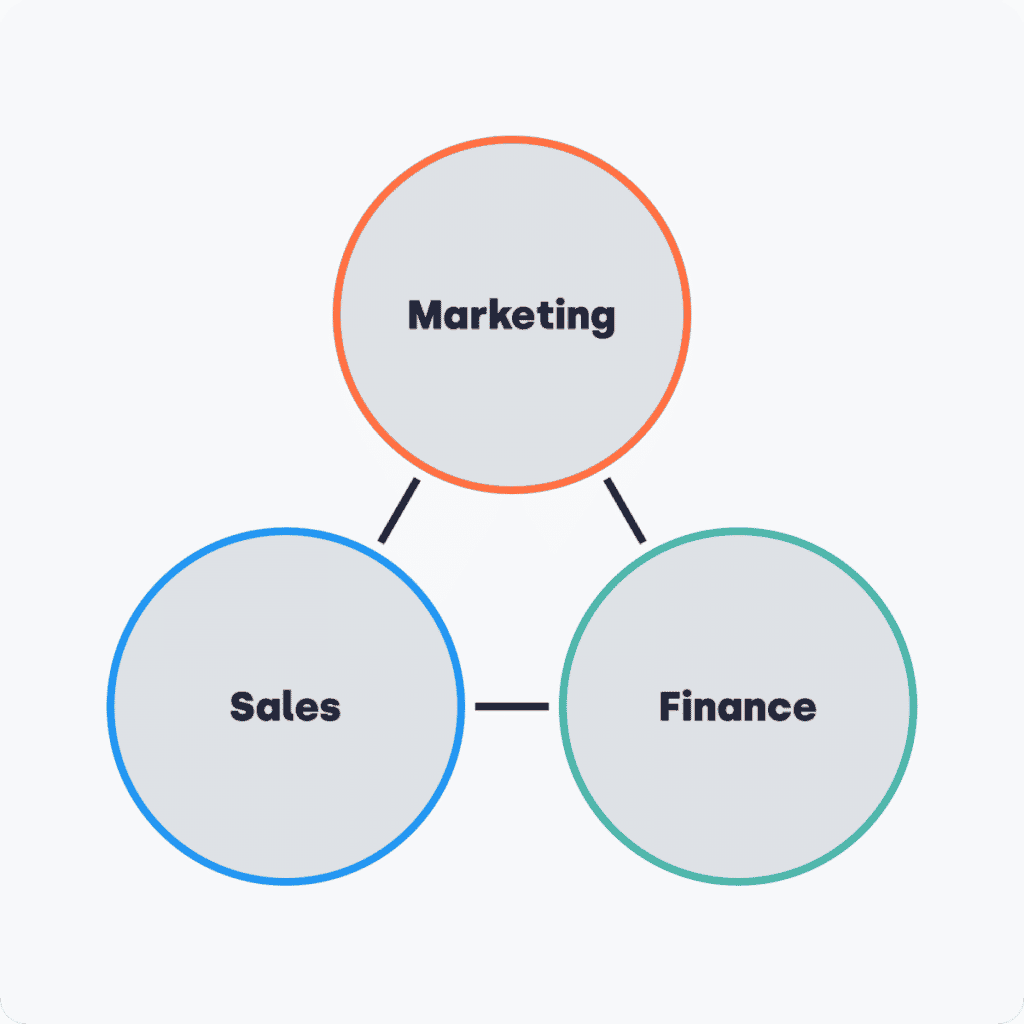8 Proven Communication Strategies For The Workplace

Communication of both the internal and external variety is integral to the success of any business. So integral, in fact, that you really ought to develop a detailed strategy for your company’s communication efforts. Here, we’ll break down what exactly a communication strategy is, and eight examples of effective communication techniques for the workplace.
Key takeaways:
KEY TAKEAWY #1
A communication strategy is a detailed plan that guides a company’s communication efforts across different channels. It covers both small-scale and broad approaches, recognizing the need for dedicated time and attention due to the complexity of communication.
KEY TAKEAWY #2
Effective communication strategies boost goal achievement and encourage collaborative business practices, particularly one-to-one communication with managers. On a larger scale, these strategies positively impact marketing, customer relations, productivity, work environment, and innovation.
KEY TAKEAWY #3
Provide clear and concise instructions for task completion, stressing the importance of direct communication to enhance efficiency and competence.
KEY TAKEAWY #4
Utilize visuals like infographics and diagrams to simplify complex ideas and engage audiences effectively, acknowledging that over half of people are visual learners.
KEY TAKEAWY #5
Promoting department collaboration ensures the success of communication strategies involving various channels. Gather feedback through anonymous surveys or questionnaires for timely adjustments, countering potential oversights in communication strategies.
What are communication strategies?
Put simply, a communication strategy is a plan that a company makes for its communications efforts across multiple channels. Communication strategies are all encompassing — they account for every area and method of communication a company may engage in.
They can be both small and large in scale, both targeted and wide-reaching. At their root, they represent the importance of preplanning in business. In order to execute complex objectives, it’s necessary to sit down with your brain trust and develop a detailed strategy.
Communication across multiple channels is a complex affair to be sure, so it’s imperative that your business and its leaders make the time to create an effective strategy for it. In this article, we’ll detail some things to keep in mind when creating a communication strategy.
Learn how to communicate successfully.
Benefits of effective communication strategies
There are a number of benefits of effective communication strategies, the primary one being that developing such a strategy will help you more efficiently achieve your communications goals.
Strategies that aim to improve one-to-one communication can take the form of training your company’s managers in effective interpersonal communication techniques. All managers, but especially those responsible for leading large and diverse teams, can benefit from professional management training.
One-to-one meetings lie at the heart of collaborative business practices, so it’s advisable to invest time and resources into developing your manager’s ability to conduct them competently.
On a larger scale, communications strategies can help your business’ marketing and outreach efforts. Your customers are your most important asset, which makes developing a well-thought-out strategy to communicate with them crucial to the overall success of your business.
All in all, having an effective communication strategy will boost productivity, create a more positive working environment and spur innovation.
Below we’ll get into some examples of strategies for effective communication in the workplace.
Learn more about communication strategies in the work place from our video:
8 communication strategies for a more effective workplace
#1 Use effective communication tools
Your communication strategy will only be as effective as the tools you have to execute it.
CloudTalk is an advanced contact center software that makes complex communications strategies easy to execute. Features like power dialer and callback boost efficiency and customer satisfaction in telephony communications, while easy-to-implement integrations with the leading CRMs empower you to build comprehensive communications strategies for your business. For customer-facing teams like customer support or customer success, they might rely heavily on tools like help desks, ticketing systems, or contact forms to connect customers directly with support staff. In these scenarios, tools are essential to effective communication and a positive customer experience
No matter how ambitious your communication strategy, CloudTalk will help you make it a reality.
If you’re looking for tools that help with internal communication, you should check out HR software such as Deel or collaboration tools such as Slack.
#2 Meet with employees in person
Though circumstance has forced many of us to do more and more business remotely over the past year, I think we’d all agree that we’ve been missing something in our communication with work colleagues.
When we have a face-to-face conversation with someone, a whole lot of important, non-verbal communication happens. These non-verbal cues shape the flow of conversation more than you may think, and they shouldn’t be neglected. Additionally, people are more likely to give you their full attention when in your physical presence.
So, while it isn’t possible for every business, we recommend holding important meetings and conferences in person.
#3 Give clear instructions
Being clear and direct about what you’re asking an employee to do is pretty much the most important thing you can do to ensure tasks are completed in a timely and competent fashion.
Giving clear instructions — both verbally and in writing — will quite literally set your employees up for success. Be sure you do it!
#4 Use visuals
Did you know that over half of all people are visual learners? It’s no wonder then that nearly every effective communication strategy employs the heavy use of visuals in its materials.
Visuals can help break down complex ideas, especially when part of a presentation to a large group. Infographics and diagrams in particular can relay important statistics related to your business goals. Visuals are also objectively more engaging to audiences than blocks of text.
#5 Create an open environment
People are more innovative when they feel as though they can toss out ideas without fear of ridicule or rejection. That’s why it’s so important to work to create an open environment at your workplace.
One way to do this is by hosting team-building retreats for your employees, if budget allows. Retreats can be both modest and extravagant in scale, but invariably give teammates a chance to bond over like interests outside of a work environment.
In a working context, you can create an open environment by allowing for anonymous feedback during meetings. Though the idea of anonymity may seemingly run counter to openness, allowing for this kind of feedback can actually help employees feel as though they can share anything they wish without fear of retribution. This kind of freedom and openness will not only make your employees feel more comfortable, it will also spur innovation.
#6 Celebrate achievements
Everyone, regardless of their station within a company, appreciates recognition for a job well done. Managers have a responsibility to not only reach out to their employees with congratulations from time to time, but also establish a framework for employees to give each other positive feedback and constructive criticism.
There are dedicated apps to facilitate this kind of intra-company feedback. Officevibe, for example, can solicit feedback and kudos from employees on a regular basis through their integration with Slack. That’s just one example, though; we invite you to see what’s out there and find the best fit for your company and its employees.

#7 Connect across departments
Inter-departmental cooperation is key to any successful communications strategy. The reason is simple: any communication strategy worth its salt will span multiple communication channels, thus calling upon the support of the workers who manage them.
For example, a communication strategy developed by a marketing team that employs the use of phone call conversations will no doubt require the support of sales agents.
Similarly, a communication strategy built upon partnership with social media influencers will need to be arranged and managed with the help of your product partnership team and finance division. The list goes on but the message is clear: cooperation is crucial to success in communication.

#8 Be open to feedback
No matter how much time you spend developing your communication strategy, there are bound to have been some missteps or oversights in your thinking. That isn’t an indictment on anyone’s abilities, rather, it’s a natural byproduct of collaborative output. Consider collaboration examples such as team brainstorming sessions or group projects, which breed innovation and are effective methods for developing communications strategies. The downside, though, is that managerial teams are often susceptible to groupthink, potentially convincing themselves of the validity of a flawed idea.
For that reason, it’s incredibly important for leaders at your company — the people who developed the larger communication strategy — to be open to feedback from all employees regardless of their position at the company.
A good way to facilitate this feedback is through anonymous surveys or questionnaires. We suggest sending out such surveys approximately one month after implementing a new communication strategy. That way people will have had enough time to evaluate the strategy for themselves, but it will still be early enough to make adjustments that may be necessary.
The Bottom Line
The idea of developing a comprehensive communication strategy for your business may seem like a daunting task, and we hope some of the tips we’ve provided in this article help you chart your own course for success.
If we were to give you one last parting piece of advice it’d be this: take special care in building a foundation for success in communications for your team.
We’d wager that CloudTalk is the embodiment of that solid foundation. It’s suite of 50+ features and 30+ integrations will supercharge your team’s communication capabilities and help unleash their full potential.
Want to see what we mean first-hand? Get started today with our 14-day free trial.


















